#ancient culture of ukraine
Explore tagged Tumblr posts
Text
Ukrainian Amulet Doll Motanka
An ancient part of our folk culture.
Made with a cross instead of a face because the spirit of an evil creature can fly through the eyes. Is a sacred object, symbolizing kindness and hope for a better future.She shouldn't resemble an existing person and have a name
Ukrainians makes it for protection house, people they loved, newborn, soldiers.



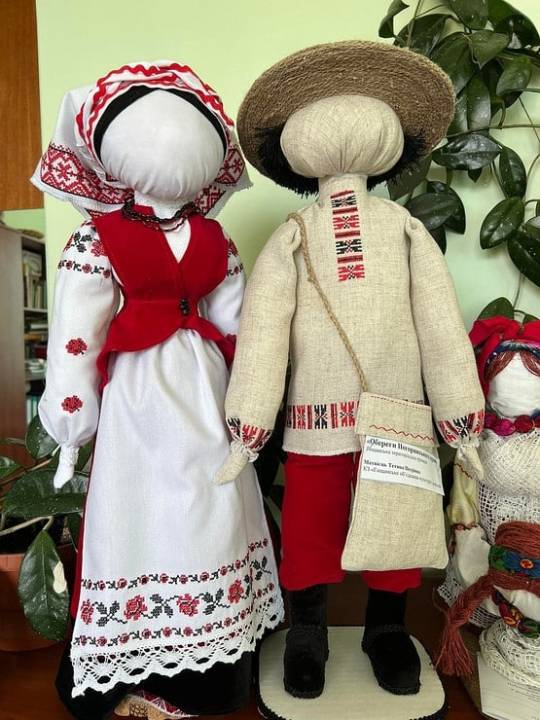
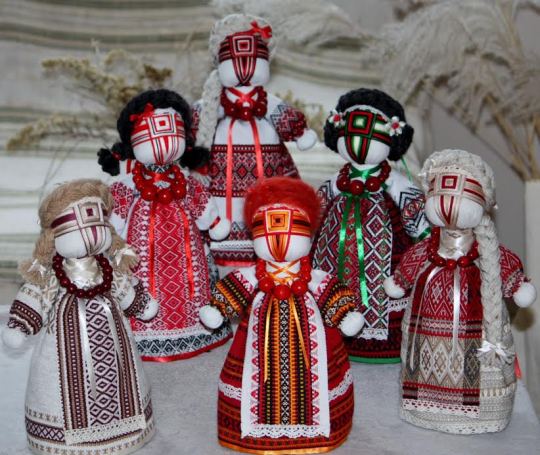
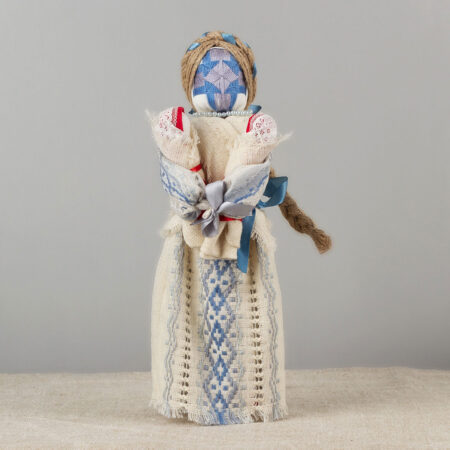
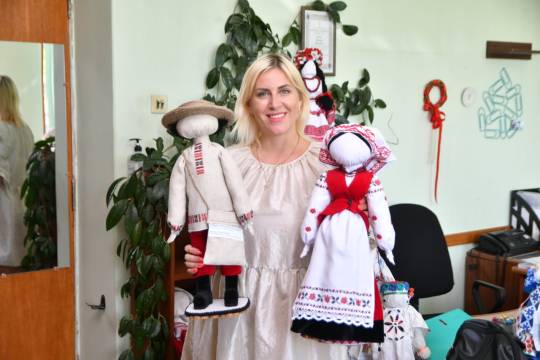
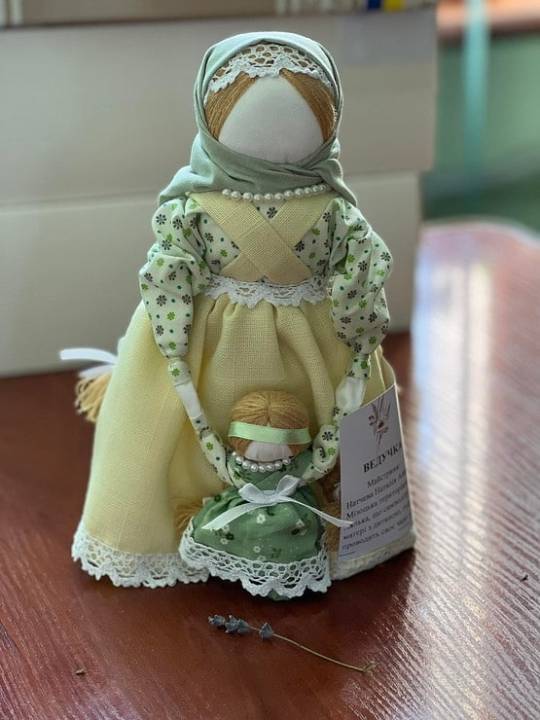
#motanka#magic doll#ukrainians#ukraine#folk art#folk culture of ukraine#ukrainian folk#magic in ukraine#ancient culture#ancient culture of ukraine#old beliefs in ukraine#mithology#ukrainian mythology#myth and legend#pagans#pagansim#stand with ukraine#ukrainian culture#pray for ukraine#folk customs#folk culture#folk customs of ukraine#ukrainians on tumblr#slava ukraini
222 notes
·
View notes
Text
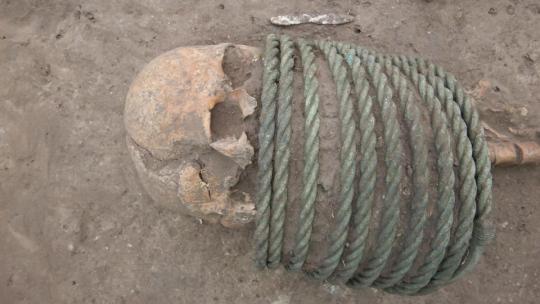
Skeletons With Rings Around Their Necks Uncovered at Ancient Cemetery In Ukraine
The discovery of a cemetery in Ukraine from a millennium ago has revealed axes, swords, jewelry and, unexpectedly, buckets around the feet of some of the dead.
Archaeologists in Ukraine have discovered a 1,000-year-old cemetery whose dead were buried with weapons, jewelry and, curiously, buckets around some of their feet.
The 11th-century cemetery is located about 50 miles (80 kilometers) south of Kyiv. Of its 107 graves, "most of the identified burials were deposed in wooden coffins," Vsevolod Ivakin and Vyacheslav Baranov, both archaeologists at the National Academy of Sciences of Ukraine, wrote in a paper they presented at the annual meeting of the Archaeological Institute of America, which was held Jan. 4-7 in Chicago.

The cemetery's dead include both men and women. Some of the men were buried with weapons, such as axes, spearheads and swords, Ivakin and Baranov wrote. A few of the women were buried with elaborate neck rings, which "are found only on necks in female burials and were apparently a kind of social marker," in this region at the time, Baranov said in an email. Some of the people were buried with wooden buckets at their feet, which may have been part of funerary rituals. Other sites that have buckets within burials have been found in the region.
The archaeologists also found a stone altar, as well as bracelets, beads and the remains of food offerings, such as chicken bones and eggshells, among other artifacts. The altar could have been used for Christian or pagan rituals, or possibly both.
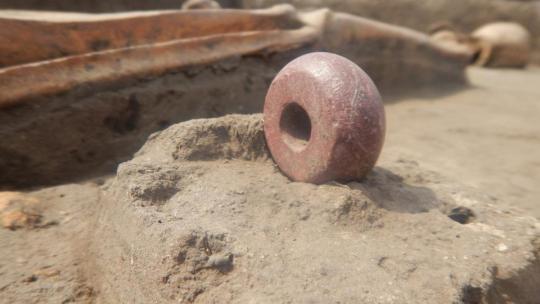
Some of the artifacts are similar to those found in the Baltic, hinting that some of the people buried in the cemetery might have come from that region to serve in the militaries of the rulers of Kyiv, such as Volodymyr the Great (who reigned from 980 to 1015) and Yaroslav the Wise (who reigned from 1019 to 1054), the archaeologists noted. The territories that Volodymyr the Great ruled stretched to the Baltic region.
At the time the cemetery was in use, people in Ukraine were converting to Christianity, the researchers said. This included Volodymyr the Great, who left behind his pagan roots and was baptized around 987 before his marriage to Anna, the sister of the Byzantine emperor Basil II.
The researchers excavated the cemetery between 2017 and 2022. The ongoing Russian invasion of Ukraine, however, has paused many excavations in Ukraine, including this one, the archaeologists said.
By Owen Jarus,
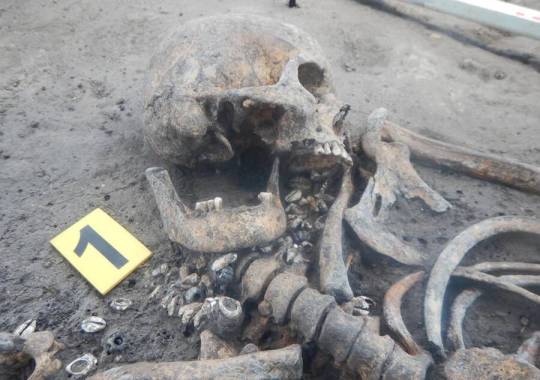
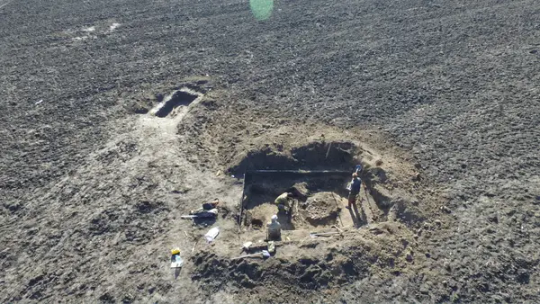
#Ukraine#Skeletons With Rings Around Their Necks Uncovered at Ancient Cemetery In Ukraine#ancient grave#ancient tomb#ancient cemetery#ancient artifacts#archeology#archeolgst#history#history news#ancient history#ancient culture#ancient civilizations
339 notes
·
View notes
Text
Hah! Super interesting site. Wonderful ceramics. (The original report is in German.)
54 notes
·
View notes
Text
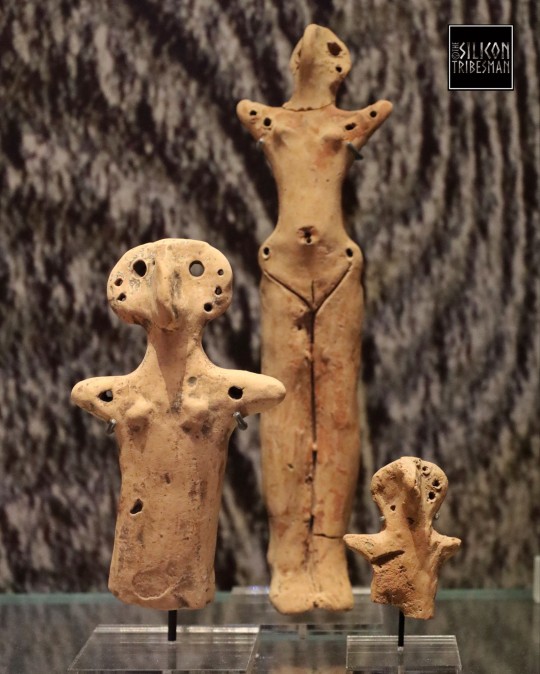
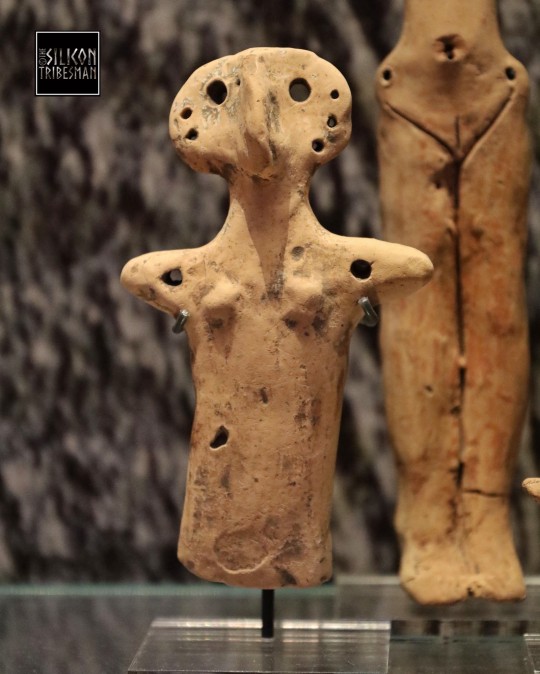
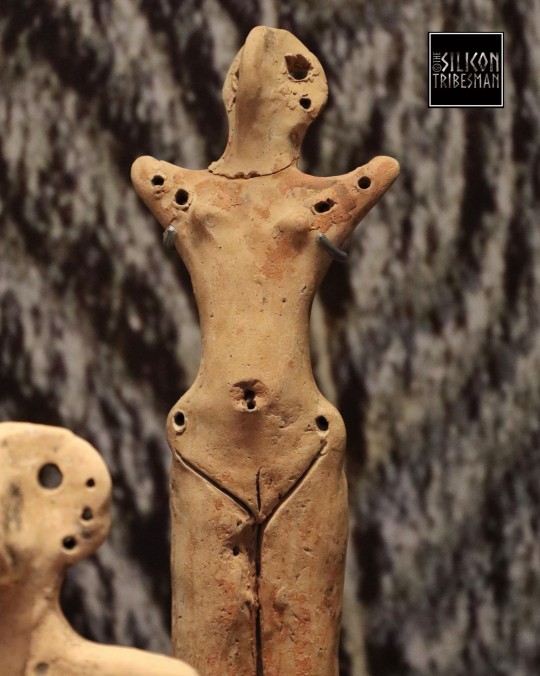
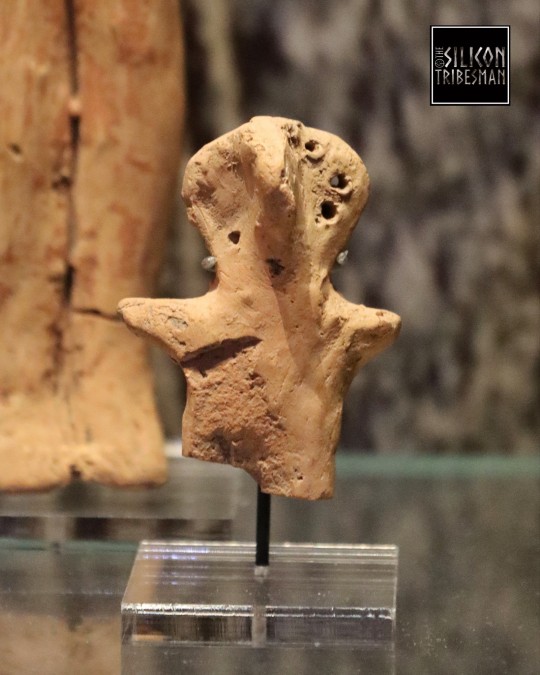
Three female figures from Koshylivtsi, Ukraine, about 3800 to 3400 BCE, with traces of painted decoration that probably represents clothing or jewellery
Ashmolean Museum, Oxford
#ice age#stone age#bronze age#copper age#iron age#neolithic#mesolithic#calcholithic#paleolithic#prehistoric#prehistory#votive#archaeology#ancient living#ancient craft#ancient cultures#ancient beliefs#figure#figurine#ukraine
173 notes
·
View notes
Text

On the left: Ornamented Trypillian dishes, 4th millennium BCE, Tomashivka village, Cherkasy region, Ukraine
On the right: Pot, Catacomb (Yamna) culture, 3rd-4th millenia BCE, Shadrivka village, Dnipro region, Ukraine
#art history#art#ukraine#ukrainian art#artwork#from the national museum of the history of ukraine collection#history#ukrainian history#support ukraine#ceramics#prehistoric art#prehistory#prehistoric ceramics#ancient art#ancient history#trypillian archeological culture#trypillian culture#trypillya#trypillia
16 notes
·
View notes
Text
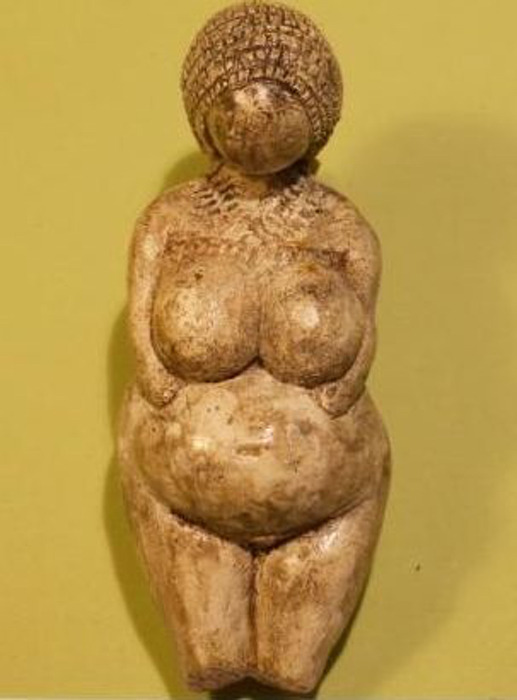
"The so-called "Venus of Kostenki" was recovered from one of the Paleolithic sites on the Don River in Russia. Several figurines from this area share the same traits and indicate a single goddess who is encountered not just in Russia but throughout prehistoric Europe and the Near East. Her commonalities in so many figurines include the largeness of breasts, belly, thighs, and buttocks; a globe of a head with closely plated hair or more likely a knitted cap; and arms folded under breasts. Of subtler recurrence, least often remarked upon but of signal importance, is how often her head is tipped downward, not skyward, for the afterlife is not in the sky but in her own womb, the womb of the fatted earth. She is additionally faceless, as the Goddess in her wholeness is unknowable. This is the standard appearance of the Kostenki goddess figurines; but how nearly identical she is to prehistoric figurines from France to Israel is what startles. It is now known that a series of prehistoric societies were extremely far-ranging in their influences, amounting to a vast society of roaming hunter-gatherers. The last of these cultures has been named the Gravettian, the mammoth hunters who built sturdy shelters of mammoth bones to stand against even Ice Age storms, or dwelt in caves or semi-underground habitations. They were not a settled culture but did have centers revisited seasonally or periodically, ritual sites or encampments along the trails of migratory animals. Gravettian art dates from 25,000 to 20,000 BCE or older in Europe (and the Kostenki sites in use from about 37,000 BCE). This surprisingly was a unified culture that lasted a minimum of 5,000 years, with lingering elements until 17,500 BCE, and influences on the following Epigravettian era in Spain, Italy, France, the Balkans and Ukraine. Their goddess figurines were small because a nomadic existence required portability. When the Ice Age ended, Gravettian culture begins its slow fade into settled agricultural societies, the first cities, the earliest of which still created heavy-set faceless goddess figurines."
~ Jessica Amanda Salmonson
#Venus of Kostenki#Jessica Amanda Salmonson#sacred ways#ancient ways#Goddess#Paleolithic#Don River#Russia#Europe#goddess figurines#Gravettian Culture#25#25000 to 20000 BCE#37000 BCE#Epigravettian#Spain#Italy#France#the Balkans#Ukraine
20 notes
·
View notes
Text

The vinok is such a beautiful and colorful wreath, making anyone who wears one look just like a princess!👑
🇺🇦💐🇺🇦
#history#ukraine#fashion#vinok#kupala night#slavic history#ancient#traditional fashion#femininity#wreath#ukrainian history#girly things#flowers#cottagecore#ivana kupala#romantic#womens history#soft girl#ukrainian culture#traditional culture#christianity#slavic#ancient history#clothing#girlhood#nickys facts
44 notes
·
View notes
Text
#ukraine#ukraine war#cultural theft#russian occupation#imperialism#russian imperialism#ancient history#history of ukraine#archeology
0 notes
Text
An ancient boat was found in Ukraine
#science#history of the scythians ukraine#history#archaeology#ancient history#antiquity#ancient art#ancient culture#artifacts#ukraine#uk news
0 notes
Text
The Yana Culture was ancestral to the population from which both early Paleo-Indians and the Ancient North Siberians arose.
By “the builders of Stonehenge,” I mean the earliest builders, ca. 3100 BCE.
Note that the last language spoken by a Denisovan/Neanderthal or by a community of Denisovans/Neanderthals may not necessarily be a Denisovan/Neanderthal language—it may be a language of anatomically modern humans they adopted. (It will at any rate be about 40-50,000 years old).
694 notes
·
View notes
Text
The Museum of Architecture in Zaporizhzhia

The museum boasts a large collection of exhibits that represent architectural styles and building technologies from various periods. Here you can find models and mock-ups of buildings, drawings, photographs, and other materials illustrating the evolution of architecture in the region.


The museum's permanent exhibitions cover a wide range of topics, including traditional Ukrainian architecture, soviet architecture, modernism, and contemporary trends in construction. The exhibits also highlight the impact of industrial development on the city's architecture.




Museum History: The Architecture Museum in Zaporizhzhia was founded to preserve and promote the architectural heritage of the city and the region. Zaporizhzhia, being an important industrial center, has a rich history of architectural development, spanning from the Cossack era to the present day.
Restoration and Preservation: One of the museum's main tasks is the restoration and preservation of historical buildings and architectural landmarks. The museum collaborates with architects, historians, and restorers to conserve architectural objects of historical significance.
Exhibition Halls: The museum features several exhibition halls, each dedicated to different epochs and architectural styles. Visitors can explore exhibits that narrate the development of architecture from the Cossack era to the soviet period and modern construction technologies
The curators and experts of the project have captured the history of Zaporizhzhia in vivid and captivating images of urban architecture, which can both impress and inspire new ideas.


#zaporizhzhia#ukraine#modern#museum#museums#museum in ukraine#ukrainians#architetural heritage#ukraine history#zaporizhzhia history#ukraine museum#city exploration#architecture#architecture museum#artifact#ancient and modern#exhibition#ancient#war in ukraine#pray for ukraine#ukraine under attack#war#stand with ukraine#ukrainian art#ukrainian culture
23 notes
·
View notes
Text
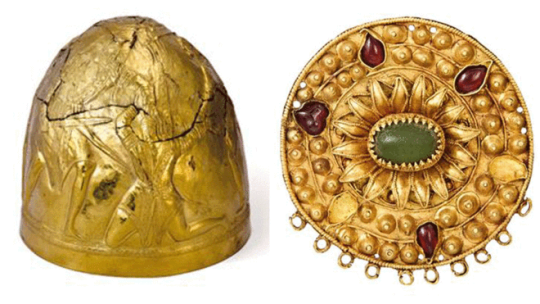
Disputed Ukrainian Treasures Returned to Kyiv After Dutch Court Ruling
A haul of Ukrainian treasures sent to Europe for an exhibition nearly 10 years ago have been returned to Kyiv from the Netherlands after a lengthy legal battle.
The collection of ancient artifacts was dispatched to the Netherlands from four museums in Crimea before Russia’s annexation of the region in 2014. But the annexation meant their return has not been straightforward.
“After almost 10 years of litigation, artifacts from four Crimean museums that were presented at the exhibition ‘Crimea: Gold and Secrets of the Black Sea’ in Amsterdam have returned to Ukraine,” the National Museum of History of Ukraine said in a statement.
The collection comprised 565 items, including antique sculptures, Scythian and Sarmatian jewelry, and Chinese lacquer boxes that are 2,000 years old, the museum said.
Rostyslav Karandieiev, Ukraine’s acting minister of culture and information policy, described the treasures’ homecoming as “our great historical victory.”
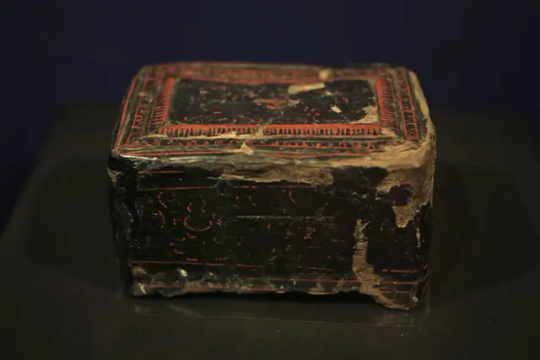

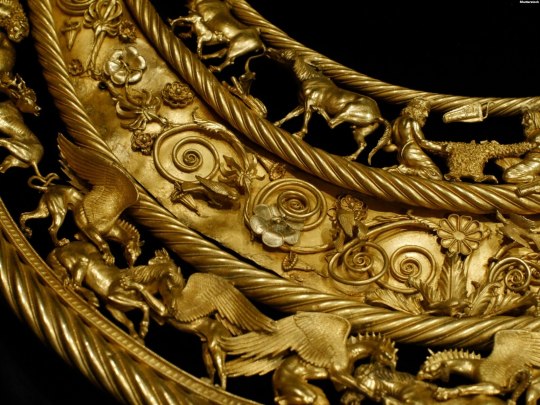


“It is very important for us to save and protect our history, traditions, and heritage. This is what we are fighting for at the battlefield. We are fighting for our identity and freedom,” he said.
“The exhibition in the Netherlands was showing the history of Ukrainian Crimea, therefore it is exclusively the people of Ukraine who should possess these treasures,” he added.
In a statement published on its website, the Allard Pierson museum in Amsterdam confirmed that the collection had been kept in storage while the legal dispute raged on over whether items should be returned to Ukraine or the four museums in Russian-controlled Crimea, with both sides claiming ownership rights over the historic pieces.
Ultimately, the Supreme Court of the Netherlands ruled on June 9 of this year that the collection should be returned to Kyiv.
In its statement, the Allard Pierson museum went on to say that the items were “independently checked and carefully packed in accordance with museum rules” last month and arrived back in Kyiv on Sunday.
Els van der Plas, director of the museum, said in the statement: “This was a special case, in which cultural heritage became a victim of geopolitical developments. After it became clear in 2014 that the judge would consider the case, we focused on safely storing the artefacts until the time came to return them to their rightful owner. We are pleased that clarity has emerged and that they have now been returned.”
Welcoming the development, Ukraine’s Ministry of Culture and Information Policy said in a statement: “Until the de-occupation of Crimea, the ‘Scythian Gold’ will be temporarily stored on the territory of the Kyiv-Pechersk Lavra.”
By Maria Kostenko, Victoria Butenko and Lianne Kolirin.
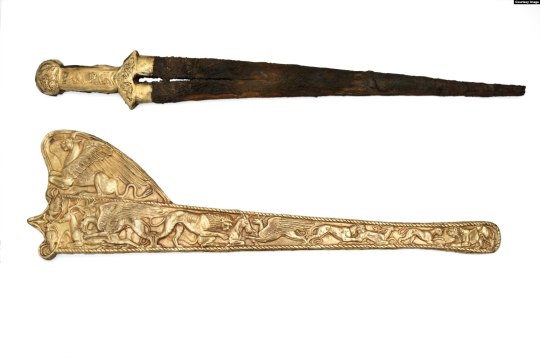
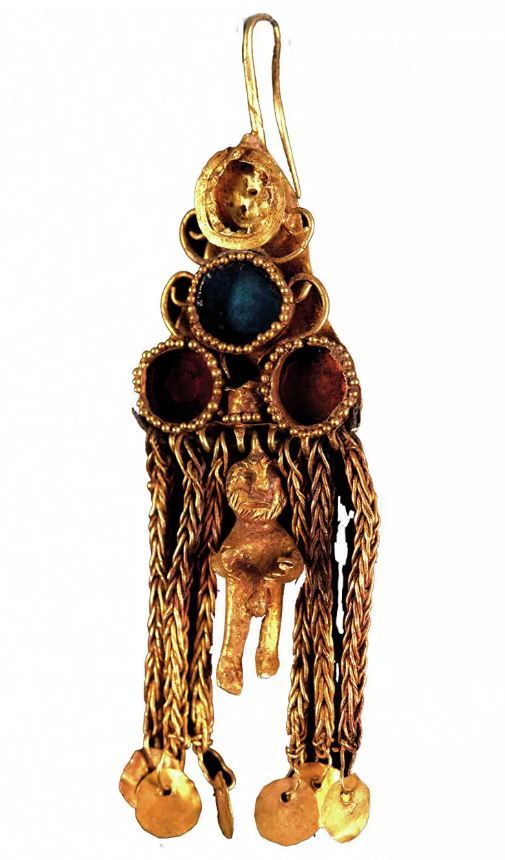
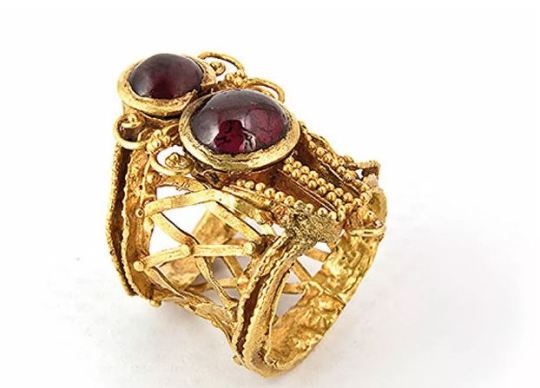
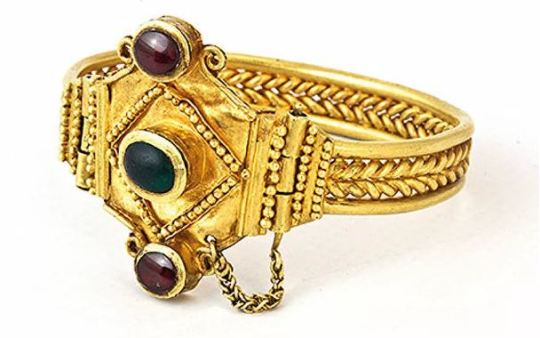
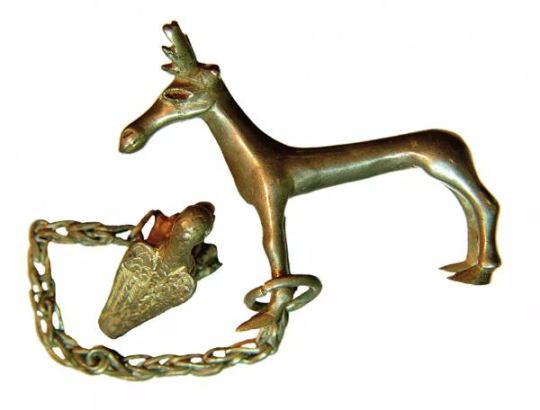
#Disputed Ukrainian Treasures Returned to Kyiv After Dutch Court Ruling#ukraine#crimea#russia#russia war crimes#looted#looted art#stolen#stolen art#gold#treasure#Scythian Gold#ancient artifacts#history#history news#ancient history#ancient culture#ancient civilizations
294 notes
·
View notes
Photo

Things We Care About
Well, Tumblr, 2022 was another big year for speaking up and supporting each other. In the past year, you took action, turned art into activism, and made your voices heard, often in support of others. We’ve analyzed your top tags and posts to determine what mattered to you in the last year.
When Ukraine was invaded, you showed your support. You continue to #stand with Ukraine, create for Ukraine, and honor Ukrainian artists caught in the crossfires.
Throughout the year, you shared many messages of body positivity and encouragement, held 5,879,971 private exchanges with @kokobot (yes, you and kokobot rlly r bestiez), and sent an inconceivable amount of anonymous, personalized messages of reassurance to each other.
You celebrated Pride with plenty of wholesome artistic offerings and showed solidarity with your peers all over the world. You stood up against the Don’t Say Gay bill in Florida and informed each other on how to vote against trans-exclusionary policies across America. When Rebel Wilson and Kit Conner were both pressured into coming out, you supported them, commiserated with them, and came to the defense of anyone who's ever been pressured to do so.
When Mahsa Amini was killed, you spoke out and posted in support of protests in Iran, learning about and spreading awareness of what women, girls, and protestors endure in the name of tradition in Iran.
When Roe v. Wade was overturned, you shared countless resources for those affected by reproductive rights infringement in the US, again turning to art as a means to share stories and ignite action. You commemorated the victims of the Uvalde shooting, saying enough is enough when it comes to gun-related violence in America. You turned your rage into art that inspires and nudged others to make their voices heard at the US polls.
You reminded users that the “civil rights movement isn’t as “ancient” as we’re taught in class,” that Black lives still matter, and always will matter. You celebrated Black Joy and Black Excellence, illuminating stories of resilience in the face of racial injustice.
You celebrated your Indigenous culture and took a stand for the preservation of Indigenous lands.
You continued to be planet-conscious by sharing ideas, resources, and knowledge of mending and making, and celebrated conservation efforts along the way.
And finally, under the continued stresses of COVID, you looked to the future with resilience, turning pain and uncertainty into hope and connection.
And that’s definitely something to be proud of. What will you stand for in 2023?
3K notes
·
View notes
Text

Since the Stone Age, humans have understood the importance of creating special spaces for worship. The Trypillians, who lived around 4000 BCE, used small portable altars with legs for their rituals. Recent excavations in Ukraine, particularly in the villages of Maydanetske (Cherkasy region) and Nebelivka (Kirovohrad region), have revealed large temples dedicated to worship and religious ceremonies. A unique discovery from these sites is the ceramic models of temples— over 50 have been found so far. These models typically feature small legs, a rounded porch, round windows, and an altar opposite the entrance.
#art#art history#ukraine#ukrainian art#support ukraine#history#ancient history#ukrainian history#ceramics#ancient art#ancient ceramics#trypillia#trypillya#trypillian archeological culture#trypillian archaeological culture#trypillian culture#from the national museum of the history of ukraine collection
13 notes
·
View notes
Photo
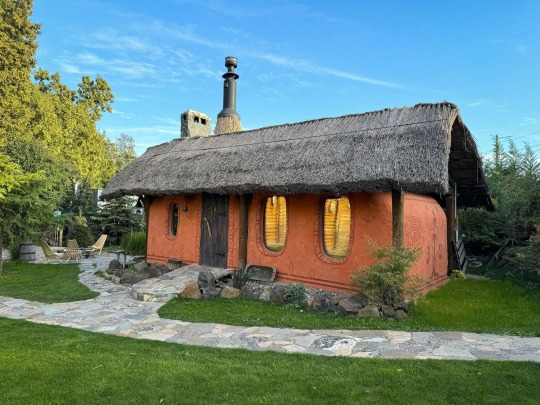
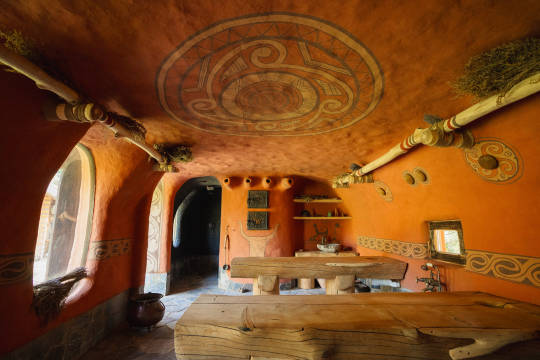
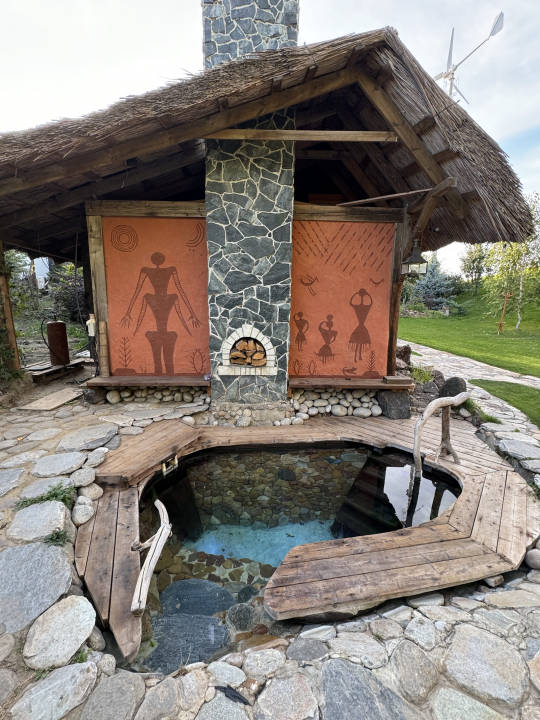
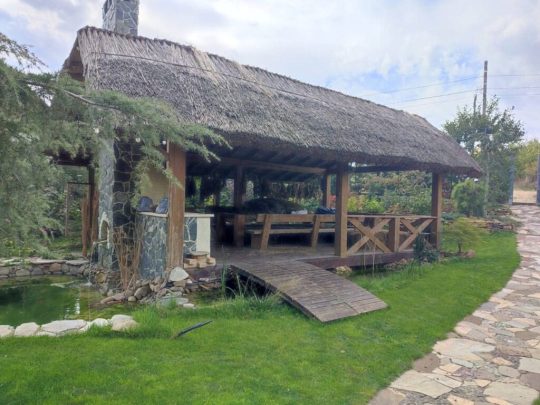

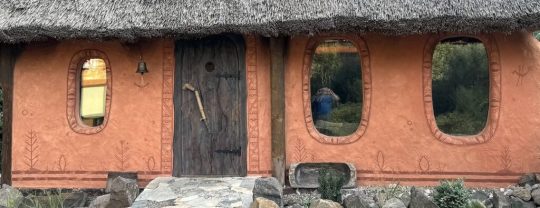
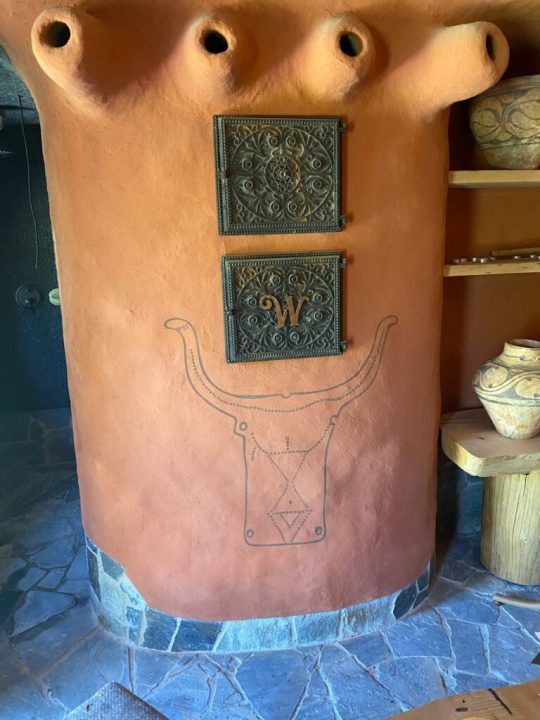

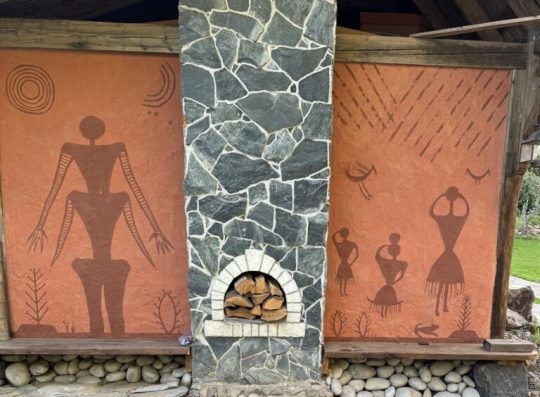
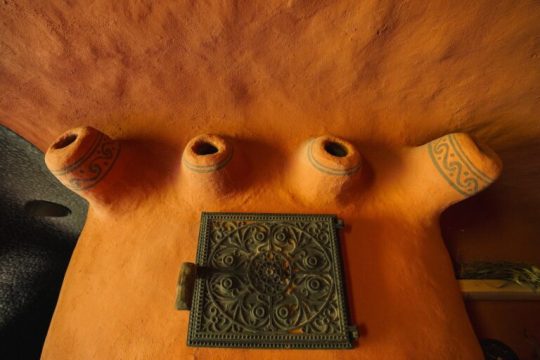
(via Trypollian Bathhouse - Dmitrii Voloshin's Blog)
#Trypollian Bathhouse#Dmitrii Voloshin#clay bath#Cucuteni-Trypollian culture#folkways#tradition#culture#ancient ways#Woloshin banya#Moldova#history#Ukraine#Sergey Burda artist#deities#ornaments#SymbolSpeak#cucuteni-trypillia culture#cult of fire#Cult of the Great Mother Goddess
6 notes
·
View notes
Text
I got the majority of this information from the YouTuber Annamarie Forcino's video "The Alarming "Gnome Hunting" Trend No One's Talking About". (https://m.youtube.com/watch?v=pf0bZOMuVFs)
This post is to help spread this information.
Please be aware:
• If you come across anything with the term "gnome hunting" or anything listed below online, block and report the account immediately. If you come across it offline, covertly and safely get the absolute fuck out of there. Warn others.
• Keep yourself safe. As with any bullshit like this these people may be violent. The wearing of tactical gear and the use of the word hunting when talking about a group of human beings is not peaceful or respectful of life. Exercise caution. Especially if you are in a group the groups they're in target.
• This is mostly on TikTok, DO NOT SEARCH FOR IT ON SITES WITH THE ALGORITHM. This will drive engagement and help it spread. If you come across it block and report it but do not search it.
The term "gnome hunting" is being used by antisemitists/neonazis/white supremacists to refer to themselves, they themselves being the "hunters" and those they target, Jews, being the "gnomes" and is a way for them to talk in code.
Things to watch out for with this specific wave of antisemitic bullshit are but are not limited to:
"join the hunt" = join us.
"millions wear the hats" millions = the Jews, hats = the Jewish Yarmulke/Kippah (a Jewish head covering). This phrase refers to Jewish people in general. When they use this phrase they are talking about Jews.
"kike" a slur against those of Jewish descent and or those who are practicing Judaism.
"88" H is the 8th letter of the alphabet. 88 = hh = "hail hitler".
"⚡⚡" "ᛋᛋ" "ϟϟ" Two lightning bolt emojis, two Greek letter ᛋ's, or two lighting bolt symbols side by side = the nazi ss. The nazi ss flag is two lighting bolt symbols side by side.
"Z" or "z" The English letter Z/z is used by russian nazis against Ukrainians who are being murdered by and suffering war crimes at the hands of russian nazis since the current russian dictator putin invaded Ukraine. Has unfortunately spread and is being used by nazis in other countries. The symbol has similarities to the wolfsangel.
"Ƶ" The wolfsangel. An ancient runic symbol believed to have been capable of warding off wolves, appropriated by nazi organizations in nazi Germany. Still used by white supremacists/nazis today.
(Cannot find a symbol for this.) The sunwheel, sonnenrad, or black sun. A symbol from old Norse and old Celtic culture. Also appropriated by nazis, still used by neonazis today.
"schizopost" "schizoposting" Used by neonazis when they use neurodivergence/mental illness (they do not struggle with) as an excuse for their bullshit. Ex: saying "I'm insane" "I'm schizophrenic" "me and the boys being schizophrenic" in the same post about "gnome hunting" or with any relation to nazi/white supremacists ideology.
#antisemitists#antisemitism#nazi mentioned#white supremacists#Cw nazism#tw nazism#tw white supremacy#Cw white supremacy#tw antisemitism#cw antisemitism#Jewish#Judaism#gnome hunting
892 notes
·
View notes